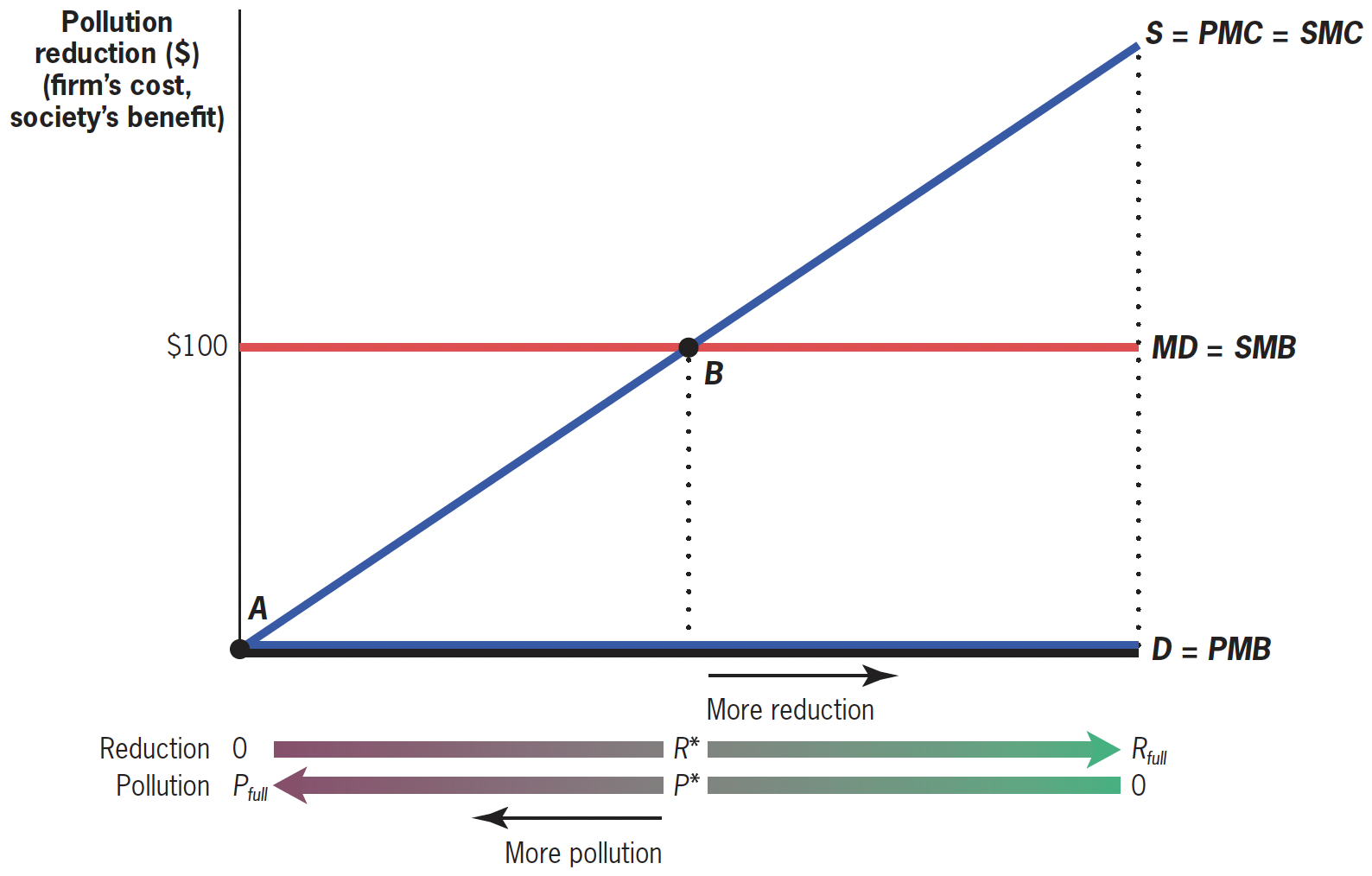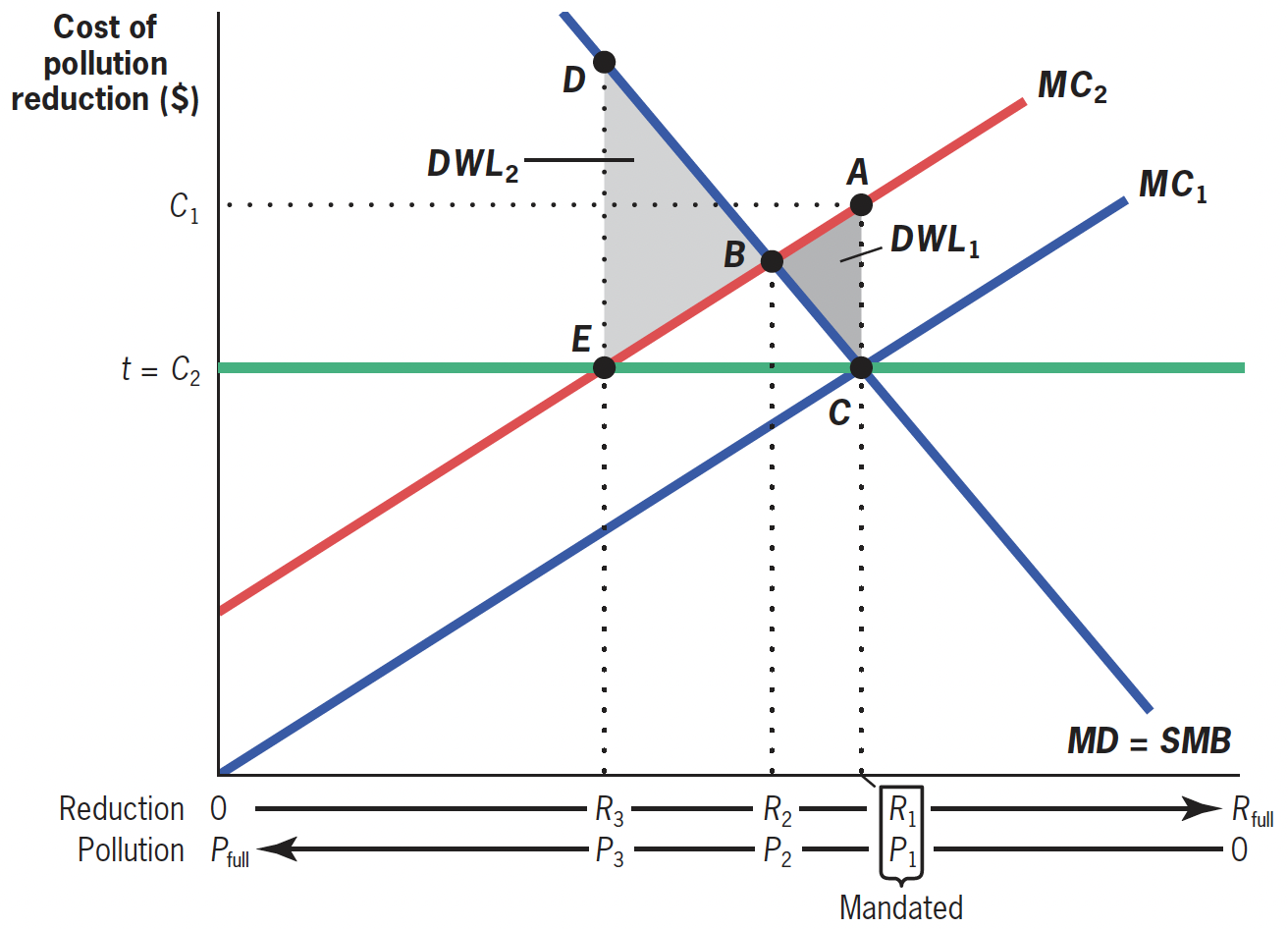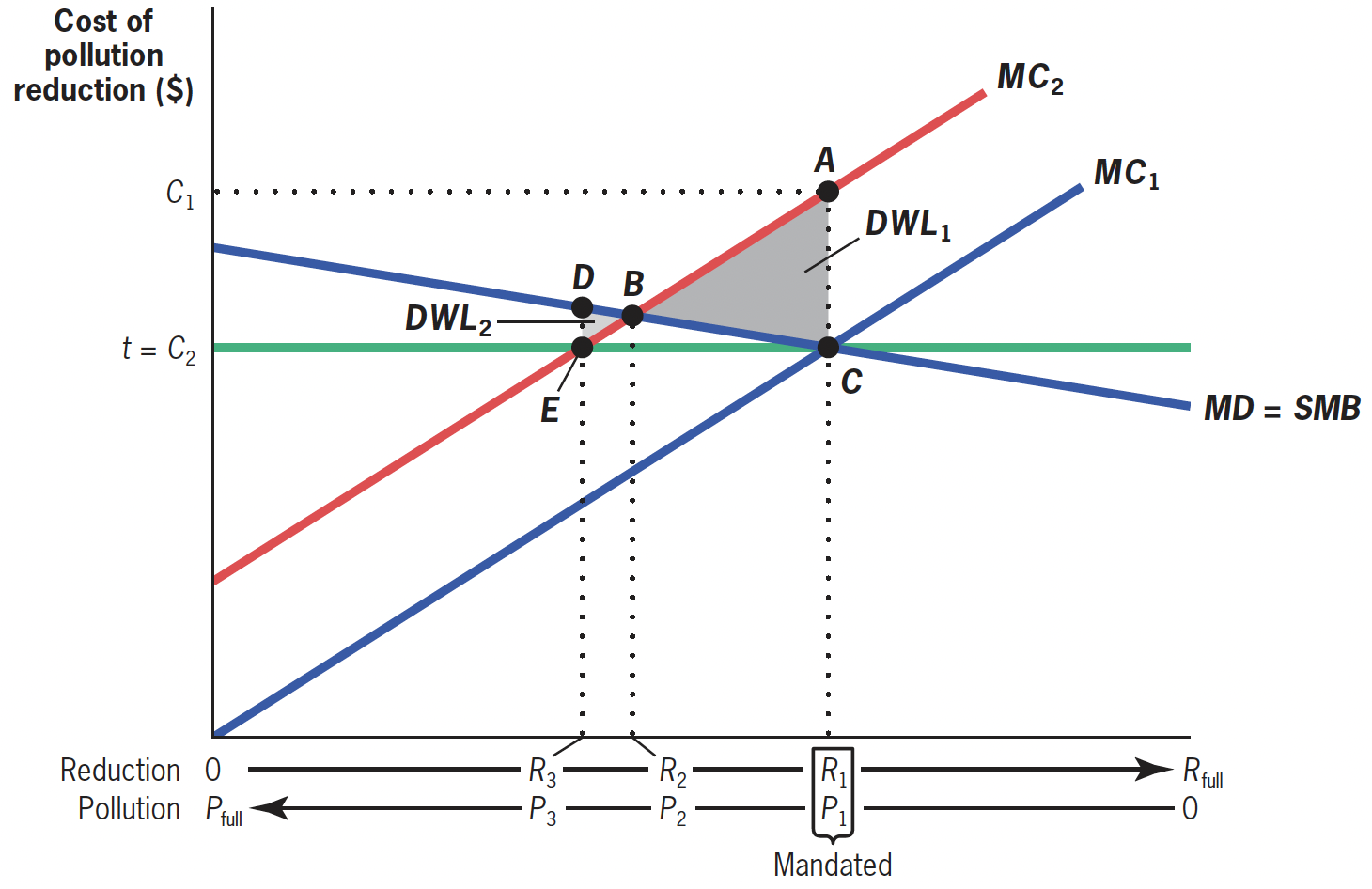Lecture 25
Climate Change II: Carbon Pricing
November 6, 2024
The Market for Pollution Reduction Under Uncertainty
The Market for Pollution Reduction

Price vs. Quantity
Imperfect Regulation in an Uncertain World
- The theory in market-based policies we’ve discussed so far is based upon the assumption of perfect information
- Regulators were assumed to know everything about both the benefits and costs of pollution control
- In the real world practice of regulation, this assumption is far from the truth
- Permits have the advantage of providing a more certain level of pollution control than do emission taxes.
- This is because taxes have to be adjusted if regulators find pollutant levels resulting from a given tax are lower or higher than expected.
Price vs. Quantity
- With cap-and-trade, directly control the quantity of pollution emitted.
- Cap-and-trade is a quantity instrument
- With pollution taxes, regulators only indirectly control the quantity of pollution, by guessing at industry response to a tax of a certain level.
- Pollution tax is a price instrument
Price vs. Quantity
Martin Weitzman’s seminal contribution
1960s economic research focus: Economic systems.
- Key debate: Planned vs. market-based economies and their impact on prosperity.
Marty’s 1974 seminal work: “Prices versus Quantities”.
- Central question: Are prices or quantities better for resource allocation?
Investigation of the above question in the context of uncertainty.
With uncertainty in costs of reducing pollution, two policies are no longer equivalent.
Price vs. Quantity
Case 1: Steep MB curve
\(MC_{1}\): Estimated \(MC\)
\(MC_{2}\): True \(MC\)
\(DWL_{1}\): DWL from Cap-and-Trade
\(DWL_{2}\): DWL from Pollution Taxes

- When the \(MB\) curve is relatively steeper than the \(MC\) curve, a marketable permit system is preferred to a pollution tax because of the costs of being wrong.
Price vs. Quantity
Case 2: Flat MB curve
\(MC_{1}\): Estimated \(MC\)
\(MC_{2}\): True \(MC\)
\(DWL_{1}\): DWL from Cap-and-Trade
\(DWL_{2}\): DWL from Pollution Taxes

- When the \(MB\) curve is relatively flatter than the \(MC\) curve, a pollution tax is preferred to a marketable permit system because of the costs of being wrong.
Carbon Tax vs. Cap-and-Trade

- Q. Which case does correspond to climate change?
Price vs. Quantity
- In Practice:
- The instrument choice depends on whether the government wants to get the amount of pollution reduction right or whether it wants to minimize costs to firms.
- Quantity regulations ensure environmental protection, but at a variable cost to firms, while price regulations ensure the cost to the firms, but at a variable level of environmental protection